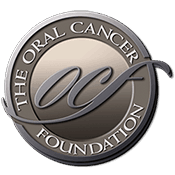Emerging indications: antioxidants for periodontal disease
Source: http://www.dentistryiq.com Author: Edward P. Allen, DDS, PhD Since approximately 10 to 15 percent of adults worldwide suffer from periodontitis at one time or another(1), oral health professionals are constantly challenged with treating patients for existing conditions and helping them prevent future occurrences. Root planing, scaling, and in severe cases, surgical intervention are part of the standard treatment for periodontitis, and antibiotics are used for infection control. However, in recent years, dental health professionals have honed in on the inflammation that accompanies periodontitis. Research shows that inflammation in the oral tissues—especially that associated with periodontitis—can be a factor in chronic illness such as heart and vascular disease, diabetes, arthritis, Alzheimer’s, pregnancy complications, and a growing list of other conditions. The real culprit with inflammation is oxidative stress, a disturbance in the balance of oxidants and antioxidants. Oxidative stress is the result of overproduction of free radicals, unstable molecules that attack tissue cells by “stealing” electrons from other molecules. Although infection is a major trigger for inflammation and oxidative stress, there are numerous other causes, such as poor diet, alcohol consumption and nicotine use or chemical pollutants. In oral tissues oxidative stress can result from dental procedures and from materials used for bleaching, composite fillings, implants, crowns, veneers, and so on. Antibiotics control the micro-organisms that contribute to periodontitis and other infection, but they do not necessarily address the free radicals and oxidative stress that accompany inflammation. Innate defense through natural salivary antibiotics and antioxidants The human body has an innate [...]
